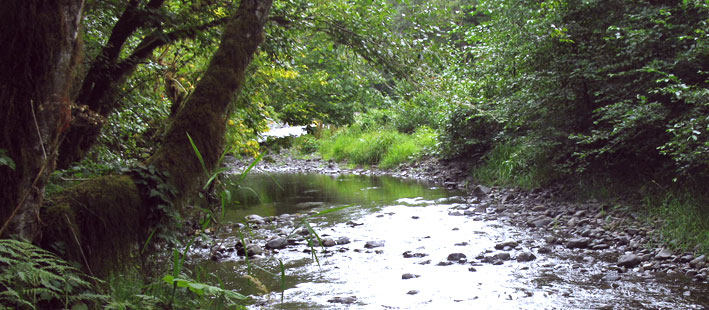
The Tenmile Creek watershed south of Yachats is one of western Oregon’s most treasured places. Surrounded by Wilderness Areas, the watershed is part of the largest coastal temperate rainforest remaining in the lower 48 states. Filled with towering Sitka spruce that harbor spotted owls and marbled murrelets and coastal streams that still support strong runs of native salmon, trout, and lamprey, Tenmile is a window to a more abundant past in the Coast Range.
“I used to catch a lot of fish here,” Hans Radtke admits with a wry smile.
And that connection to water led him and his family to make a home for themselves on a bluff high above Tenmile Creek. With an eye to the forest and its distinctive natural wealth, the Radtkes looked for alternatives to logging and raising cattle.
That’s when a different take on land stewardship came to light.

“In 2002,” Hans remembers, “I heard what was going on along the John Day River. There was an older homestead family working on a conservation easement there with the Bonneville Power Administration. They wound up dedicating a lot of their acreage and some water rights to Chinook salmon run conservation. It was impactful, their decision to do an easement.”
The commonsense, incentives-based approach to stewardship impressed Hans – a respected natural resource economist by trade – just as it had the John Day ranchers. “Conservation easements make economic sense. Putting things aside can provide a good economic return.”
The Radtkes and other neighbors sought out the McKenzie River Trust in 2004 to develop conservation easements, eventually protecting more than 430 acres of streamside forest and meadow.
By collaborating with the McKenzie River Trust, the Radtke family gained economic value from their land while protecting what makes it so special. Since then, their home has become a gathering place for people from around the world interested in how financial incentives can protect healthy forests and wild fish runs.
As an angler, Hans’ eyes light up at the thought of all those fish returning each year. “I always put them back,” he says. That gesture, like the Radtke Family’s commitment to conservation, is a both a nod to the past and an investment in the future.
